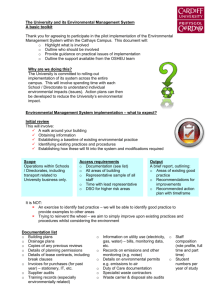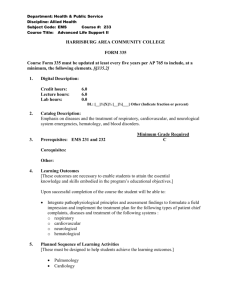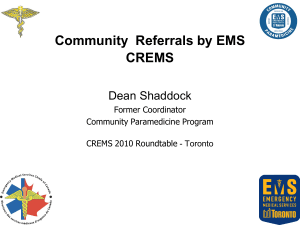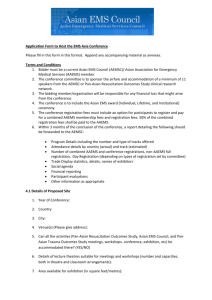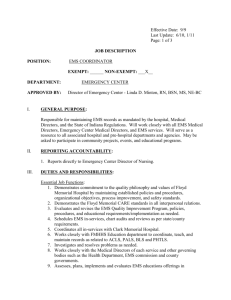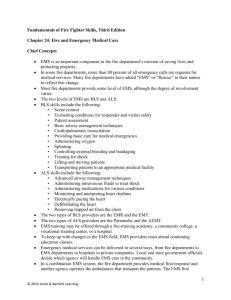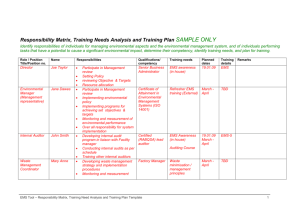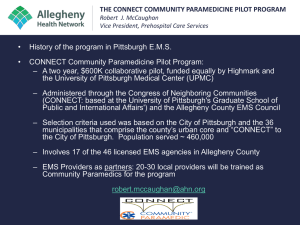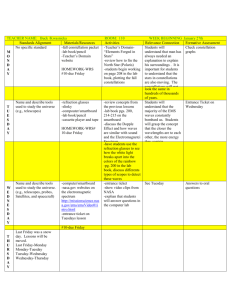Environmental Management System
advertisement
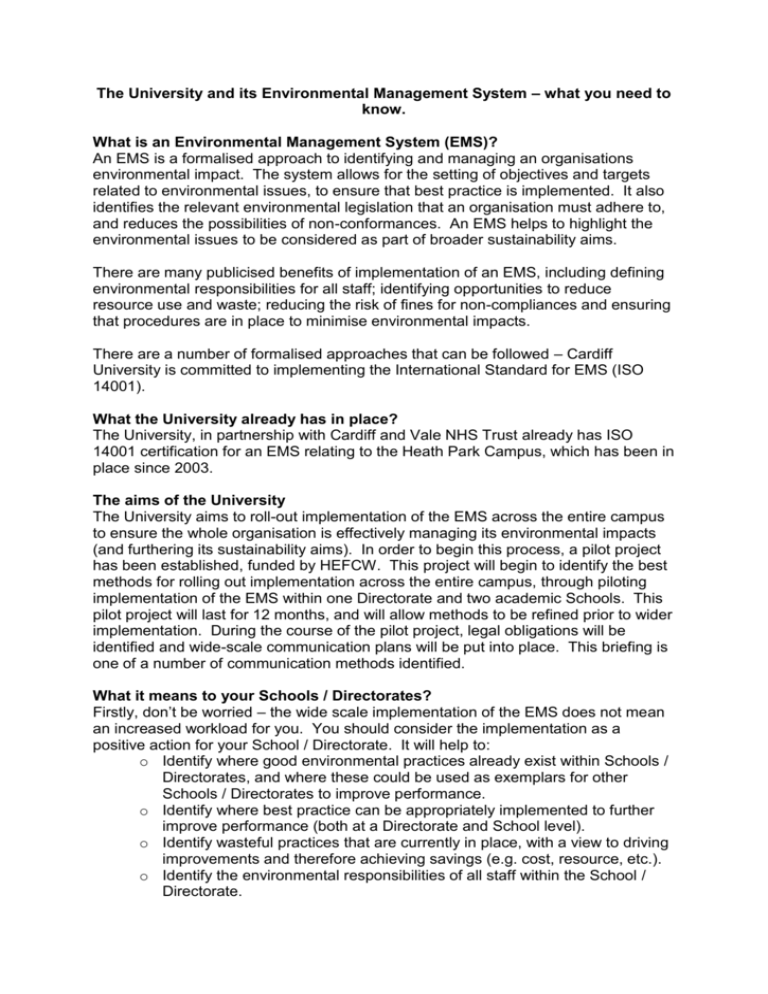
The University and its Environmental Management System – what you need to know. What is an Environmental Management System (EMS)? An EMS is a formalised approach to identifying and managing an organisations environmental impact. The system allows for the setting of objectives and targets related to environmental issues, to ensure that best practice is implemented. It also identifies the relevant environmental legislation that an organisation must adhere to, and reduces the possibilities of non-conformances. An EMS helps to highlight the environmental issues to be considered as part of broader sustainability aims. There are many publicised benefits of implementation of an EMS, including defining environmental responsibilities for all staff; identifying opportunities to reduce resource use and waste; reducing the risk of fines for non-compliances and ensuring that procedures are in place to minimise environmental impacts. There are a number of formalised approaches that can be followed – Cardiff University is committed to implementing the International Standard for EMS (ISO 14001). What the University already has in place? The University, in partnership with Cardiff and Vale NHS Trust already has ISO 14001 certification for an EMS relating to the Heath Park Campus, which has been in place since 2003. The aims of the University The University aims to roll-out implementation of the EMS across the entire campus to ensure the whole organisation is effectively managing its environmental impacts (and furthering its sustainability aims). In order to begin this process, a pilot project has been established, funded by HEFCW. This project will begin to identify the best methods for rolling out implementation across the entire campus, through piloting implementation of the EMS within one Directorate and two academic Schools. This pilot project will last for 12 months, and will allow methods to be refined prior to wider implementation. During the course of the pilot project, legal obligations will be identified and wide-scale communication plans will be put into place. This briefing is one of a number of communication methods identified. What it means to your Schools / Directorates? Firstly, don’t be worried – the wide scale implementation of the EMS does not mean an increased workload for you. You should consider the implementation as a positive action for your School / Directorate. It will help to: o Identify where good environmental practices already exist within Schools / Directorates, and where these could be used as exemplars for other Schools / Directorates to improve performance. o Identify where best practice can be appropriately implemented to further improve performance (both at a Directorate and School level). o Identify wasteful practices that are currently in place, with a view to driving improvements and therefore achieving savings (e.g. cost, resource, etc.). o Identify the environmental responsibilities of all staff within the School / Directorate. o Ensure standard procedures take environmental matters into account. o Potentially increase the success of grant / tender applications. The process Implementation will be managed by OSHEU through the Assistant Director Environment and the newly appointed EMS Officer. The pilot areas are currently being identified. Those selected will be contacted soon, but there is the opportunity for other Schools / Directorates to volunteer themselves to participate in the process as well. The pilot areas will be supported by the OSHEU team, and will be encouraged to develop internal teams (as appropriate), which should consist of appropriate staff to drive the implementation process. The OSHEU team is developing a wide scale communication plan to assist with awareness raising and the implementation process. This briefing is the first in a series of such, aimed at raising awareness of the process and the intentions within the University. The communication plan will cover every level and grade of staff within your School. For further information, please contact: Dr Katrina Henderson hendersonka@cf.ac.uk / Mrs Lara Hopkinson hopkinsonl@cf.ac.uk Ext 70786

